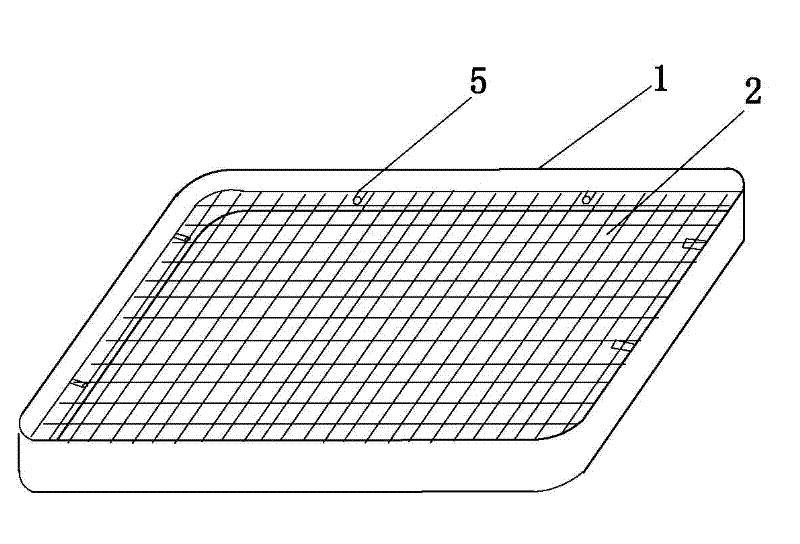Small insect/small spider specimen collection method and loading plate
A technique for collecting specimens and carrying trays, which is applied to devices for catching or killing insects, applications, animal husbandry, etc., to achieve the effects of low cost, fast collection speed, and easy training
- Summary
- Abstract
- Description
- Claims
- Application Information
AI Technical Summary
Problems solved by technology
Method used
Image
Examples
Embodiment 1
[0025] Such as figure 1 shown.
[0026] A method for collecting specimens of small insects and small spiders. First, take a white-bottomed carrier plate 1 with a mesh compartment 2 that matches the specimen to be collected; Dial the fallen leaves or weeds into the holding tray with a mesh compartment on the white bottom; thirdly, pat the litter, fallen leaves or weeds in the tray several times with your hands or dressing tweezers on the mesh compartment, After the small insects and spiders have all drilled into or fallen into the bottom of the carrying tray, remove the net-like interlayer, and remove dead branches and leaves or weeds; fourth, shake the carrying tray, and after finding small insects and small spiders, use The brush with anesthetic touches the worm body to anesthetize it, uses the surface tension to absorb small animals, and moves them into the specimen bottle. When the specimen is to be identified, use a rubber-tipped dropper to absorb the specimen and take it...
Embodiment 2
[0035] Such as figure 1 shown.
[0036] A carrying tray for collecting specimens of small insects and small spiders, which includes a tray body 1 (can be square or round, square in the figure) and a mesh compartment 2, such as figure 1 As shown, the bottom of the disc body 1 is white, and the side wall of the disc body 1 is provided with steps or protrusions 5 supporting the mesh interlayer 2, and the mesh interlayer 2 is commercially available Or self-made metal mesh or hard plastic mesh, the aperture of which is slightly larger than the circumferential dimension of the specimen to be collected.
Embodiment 3
[0038] Such as figure 2 , 3 , 4 shown.
[0039] A carrying tray for collecting specimens of small insects and small spiders, which includes a tray body 1 (which can be round or square, and is round in the figure) and a mesh compartment 2, such as figure 2 As shown, the bottom of the disc body 1 is provided with a monochromatic layer, and the side wall of the disc body 1 is provided with steps or protrusions 5 supporting the mesh partition 2, and the mesh partition 2 On the side opposite to the bottom of the pan, a one-way conduit 3 (such as image 3 As shown) According to the size of the collected specimens, a series of mesh compartments 2 with different apertures or mesh sizes can be designed for use. When using, first select a mesh compartment with a matching size and put it into the tray body 1, one-way The inner wall or outlet end of the passage conduit 3 is provided with a one-way barb 4; the side wall of the disc body 1 is coated with a grease slip coating that can ...
PUM
| Property | Measurement | Unit |
|---|---|---|
| Aperture | aaaaa | aaaaa |
| Aperture | aaaaa | aaaaa |
Abstract
Description
Claims
Application Information
 Login to View More
Login to View More - R&D
- Intellectual Property
- Life Sciences
- Materials
- Tech Scout
- Unparalleled Data Quality
- Higher Quality Content
- 60% Fewer Hallucinations
Browse by: Latest US Patents, China's latest patents, Technical Efficacy Thesaurus, Application Domain, Technology Topic, Popular Technical Reports.
© 2025 PatSnap. All rights reserved.Legal|Privacy policy|Modern Slavery Act Transparency Statement|Sitemap|About US| Contact US: help@patsnap.com



